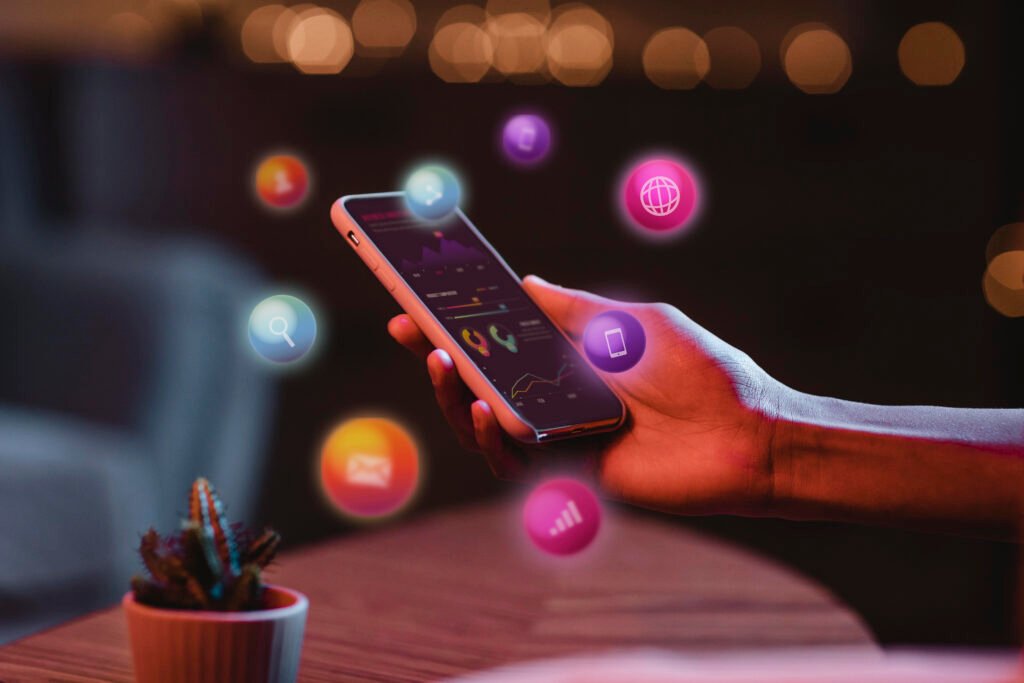Table of Contents
Certainly! As a creator, having the right tools can significantly impact your productivity and creativity. Here are some free tools that can help you create and sell digital products:

- Canva:
- Canva is a user-friendly graphic design tool that allows you to create stunning visuals without the need for advanced design skills.
- It offers thousands of templates for various content types, including social media graphics, infographics, and webinar presentations.
- Customize designs with your own images, logos, and branding elements.
- Canva’s free plan includes 25,000 templates, over 100 design types, and 5GB of cloud storage1.
- Unsplash:
- Unsplash provides a vast collection of high-quality, watermark-free stock photos.
- Use these stock photos to add personality and interest to your designs.
- Categories range from nature and architecture to fashion and health.
- Ensure consistency by selecting photos that align with your brand’s look and feel1.
- Krita:
- Krita is an open-source painting program suitable for digital art and illustrations.
- It offers powerful features for creating and editing images, making it a great choice for artists and designers2.
- BeFunky:
- BeFunky is an online photo editor and collage maker.
- Use it to enhance and manipulate images, create collages, and add filters or effects2.
- Fontstruct:
- Fontstruct is an online font creator tool.
- Design custom fonts or modify existing ones to suit your brand or project2.
1.Monetizing Your Digital Products: Strategies for Success
In the vast digital landscape, where creativity and innovation thrive, turning your digital products into a sustainable revenue stream is both an art and a science. Whether you’re a seasoned entrepreneur or a budding creator, let’s embark on a journey to explore effective strategies for monetizing your digital offerings.
- Understanding the Landscape
Before we dive into specific strategies, let’s set the stage. Imagine you’ve crafted a beautiful digital product—a mobile app, an e-book, or perhaps an online course. Now what? How do you ensure your hard work translates into financial success? Let’s break it down. - Know Your Audience Intimately
Your audience is at the heart of your monetization strategy. Understand their pain points, desires, and behaviors. Are they tech-savvy early adopters or cautious traditionalists? Do they value convenience, exclusivity, or community? Knowing your audience intimately allows you to tailor your approach effectively. - The Art of Monetization Models
Let’s explore some tried-and-true monetization models:
- Paid Apps: Remember when users paid upfront for mobile apps? While this model has evolved, it still works well for certain categories like productivity tools, photo editors, and navigation apps. Users appreciate quality, and they’re willing to pay for it.
- In-App Purchases: Offering a free app with premium features available for purchase is a smart move. Users get a taste of your product, and if they find value, they’ll happily pay for additional functionality.
- Subscriptions: Recurring revenue is the holy grail. Consider subscription models where users pay a monthly or annual fee to access your content or services. Streaming platforms like Netflix and Spotify have mastered this approach.
- Freemium: This hybrid model combines free basic features with premium upgrades. Freemium apps entice users with a free version, then offer enticing paid features. Dropbox and Evernote follow this path.
- Affiliate Marketing: If your digital product caters to a niche audience, consider affiliate marketing. Promote relevant products or services within your app or content, and earn commissions on sales.
- Sponsored Content: Collaborate with brands or influencers to create sponsored content. For instance, a fitness app could partner with a sportswear brand for exclusive workout videos.
- . The Science of Implementation
Now, let’s roll up our sleeves and implement these strategies: - Case Study: “FitPal”
FitPal, a fitness app, embarked on its monetization journey. Here’s how it unfolded:
- Initial Launch: FitPal offered free workout routines and nutrition tips. Users loved it but wanted more.
- Freemium Model: FitPal introduced a premium tier with personalized workout plans, exclusive recipes, and expert consultations. Subscriptions started rolling in.
- Affiliate Partnerships: FitPal collaborated with fitness gear brands. Users could buy recommended products directly from the app, earning FitPal a commission.
- Human Touch: FitPal’s blog featured success stories from real users. These relatable narratives built trust and encouraged more sign-ups.
- The Heartfelt Conclusion
Monetization isn’t just about squeezing every penny—it’s about sustaining your passion, providing value, and impacting lives. As you navigate this digital frontier, remember that your product isn’t merely lines of code; it’s a solution that resonates with real people. So go forth, create, and monetize wisely!
2.Understanding Digital Product Monetization

Before diving into specific strategies, let’s define what digital product monetization entails. It’s all about generating income from your software, apps, e-books, courses, or any other digital offering. Here are some popular methods:
- Paid Apps: Remember the days when users paid upfront for mobile apps? While this model has evolved, it still works well for certain categories like productivity tools, photo editors, and navigation apps. Users appreciate quality, and they’re willing to pay for it1.
- In-App Purchases: Offering a free app with premium features available for purchase is a smart move. Users get a taste of your product, and if they find value, they’ll happily pay for additional functionality.
- Subscriptions: Recurring revenue is the holy grail. Consider subscription models where users pay a monthly or annual fee to access your content or services. Streaming platforms like Netflix and Spotify have mastered this approach.
- Freemium: This hybrid model combines free basic features with premium upgrades. Freemium apps entice users with a free version, then offer enticing paid features. Dropbox and Evernote follow this path.
- Affiliate Marketing: If your digital product caters to a niche audience, consider affiliate marketing. Promote relevant products or services within your app or content, and earn commissions on sales.
- Sponsored Content: Collaborate with brands or influencers to create sponsored content. For instance, a fitness app could partner with a sportswear brand for exclusive workout videos.
3.Choosing Your Monetization Path

Monetizing your digital product is akin to navigating a bustling marketplace. Each path you choose has its own rhythm, its own dance. Let’s lace up our entrepreneurial shoes and explore the winding trails of monetization, guided by the whispers of user needs and the heartbeat of value creation.
- 1. The Art of Understanding Your Audience
Imagine standing at a crossroads, surrounded by potential customers. They’re not just numbers; they’re individuals with dreams, fears, and desires. Know them intimately. What keeps them awake at night? What solutions do they crave? Are they tech-savvy explorers or cautious traditionalists? The more you understand, the better you can tailor your approach. - The Paid App Path
Remember the days when users paid upfront for mobile apps? It’s like inviting someone to a grand feast—the anticipation, the promise of something delightful. If your digital product is a masterpiece, consider the paid app route. Users appreciate quality, and they’re willing to pay for it. Whether it’s a productivity tool, a photo editor, or a navigation app, this model still resonates. - The In-App Purchase Waltz
Picture a bustling bazaar where vendors offer free samples. Users stroll by, tasting a morsel here, a sip there. Then they spot something irresistible—a premium spice blend, a rare artifact. That’s the magic of in-app purchases. Offer a free app with basic features, and let users unlock premium functionality. It’s like adding secret ingredients to a recipe—they enhance the flavor. - The Subscriptions Tango
In the subscription ballroom, recurring revenue swirls like a waltz. Users don’t just buy once; they commit to a dance—a monthly or annual rhythm. Think of streaming platforms like Netflix or Spotify. They’ve mastered the art of subscriptions. Your digital product, too, can sway to this beat. Create a members-only club, where subscribers enjoy exclusive content, early access, and a sense of belonging
. - The Freemium Fusion
Freemium is the hybrid dance—a blend of free and premium. Imagine a garden party where everyone’s invited. Some guests sip lemonade by the fountain (free features), while others slip into the elegant ballroom (premium upgrades). Dropbox and Evernote waltz in this space. Freemium apps entice users with a taste, then whisper, “Would you like the full experience?” - The Affiliate Marketing Rhapsody
Now, let’s add a dash of adventure. Imagine your digital product as a treasure map. Along the journey, you encounter fellow travelers—brands, services, products. Affiliate marketing is the art of collaboration. Promote relevant offerings within your app or content. When users follow the trail and make a purchase, you earn a commission. It’s like sharing a secret path to hidden gems. - The Sponsored Content Waltz
Picture a moonlit soirée. Influencers and brands twirl gracefully, their stories weaving through the night. Sponsored content is this elegant dance. Collaborate with brands aligned with your product’s essence. Let their narratives blend seamlessly with yours. For instance, a fitness app partnering with a sportswear brand—each step tells a story, each move whispers authenticity. - 2. The Science of Implementation
As you choose your path, remember:
- User Experience: Monetization shouldn’t disrupt the dance floor. Seamless integration is key. Imagine a meditation app—ads during a calming session would be like a clumsy stumble. Opt for harmony.
- Vertical Value Integration: Look beyond the steps. How can your product integrate vertically? Data-driven insights help. A language-learning app partnering with travel agencies for immersive language trips—now that’s a tango with purpose.
- 3. The Heartfelt Encore
Monetization isn’t just about coins in the hat; it’s about sustaining your passion orchestra. Your digital product isn’t just code; it’s a symphony that resonates with souls. So, dear creator, go forth, dance, and let your monetization melody echo through the digital halls.
4. Case Study: The Journey of “FitPal”
FitPal, a fitness app, embarked on its monetization journey. Let’s see how it fared:
- Initial Launch: FitPal offered free workout routines and nutrition tips. Users loved it but wanted more.
- Freemium Model: FitPal introduced a premium tier with personalized workout plans, exclusive recipes, and expert consultations. Subscriptions started rolling in.
- Affiliate Partnerships: FitPal collaborated with fitness gear brands. Users could buy recommended products directly from the app, earning FitPal a commission.
- Human Touch: FitPal’s blog featured success stories from real users. These relatable narratives built trust and encouraged more sign-ups.
5.Conclusion and Results :Monetize my digital products
In the ever-evolving digital landscape, monetization is both an art and a science. Understand your audience, choose the right path, and infuse a human touch. Remember, your product isn’t just lines of code—it’s a solution that impacts lives. So, go forth, create, and monetize wisely!
Remember that while these tools are free, your creativity and unique ideas are what truly make your digital products stand out. Happy creating! 🎨🚀

